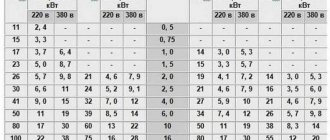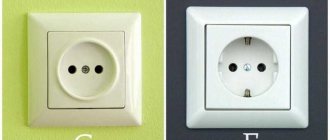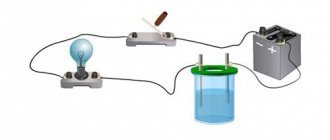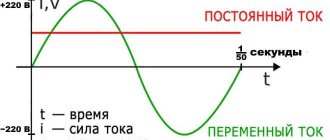You've probably already heard that housing and communal services tariffs have increased again in Russia - this time by 2.4%. Meanwhile, the size of monthly utility bills can be reduced - although to do this you will have to save water and electricity. It seems clear what to do with water - if you don’t open the taps at full power and install water-saving attachments on the faucets, you can pay less for it. But what about electricity? Experts insist that seven devices consume the most electricity, which force us to regularly pay fabulous sums to utility companies. We tell you which devices cost us the most to operate.
- TV
- TV set-top box
- Fridge
- Washing machine
- Electric kettle
- Computer
- Charging device
TV
This electrical appliance is found in almost every home, and some even have a TV in every room. And, of course, most people never unplug the TV, not even realizing that it consumes electricity even in sleep mode - about 25 watts per day or 750 watts per month. Accordingly, two TVs “steal” twice as much electricity from you, and three TVs “steal” you three times. This is why you should unplug all televisions in your home, at least while you're away and sleeping.
Devices that continue to “wind” when turned off
Were you on vacation or at the dacha, only the refrigerator was working in the house, and the meter readings did not coincide with the calculations according to electricity consumption standards? The first thing that comes to mind is that the meter was caught with a “secret” and the readings on it are incorrect. And the most interesting thing is that you are wrong, and the device is not to blame.
Why? Let's figure it out, and for this we will answer one of the main questions: before leaving, were all consumers disconnected from the power supply? And if not, then the counter definitely has nothing to do with it.
Because all units that are in standby mode, regardless of whether the indicator is on or whether there is a timer, consume electricity. A charger left in the socket, a base for a radiotelephone, and a printer turned on “eat up” about 1 watt in an hour. In 1000 hours (about 41 days) this amount will turn into a kilowatt. Unnoticeably at first glance, various kitchen appliances are powered, for example, a coffee maker, electric stove, microwave or thermopot.
Fridge
The champion in electricity consumption is the refrigerator, and this is not surprising: this appliance is forced to cool and freeze your food 24 hours, seven days a week. Therefore, the average consumption is approximately 750 watts per day or 22.5 kilowatts per month. Of course, you won't be able to unplug the refrigerator, but you should know that the hotter it is in your kitchen, the more power it will need. So place it away from the stove and ventilate it more often.
Main energy consumption classes of refrigerators
Depending on the electricity consumption, equipment is divided into classes. A household appliance with low energy consumption is more expensive, but its cost is offset in the long term by the energy saved.
The energy consumption category, which shows the total hourly electricity consumption, is calculated as a percentage or conventional indices. The index indicates the amount of time required by the unit to maintain a given temperature.
An economical refrigerator needs 15% of the operating time so that the temperature does not decrease, an uneconomical one requires several times more. The equipment will be more economical if it runs the cooling cycle and turns on the motor less often.
Energy consumption classes are designated in Latin letters from A to G. To the existing seven classes, three more have been added: A+, A++, A+++ - they have higher efficiency indicators than A. The classes are indicated on a sticker and are duplicated in the operating instructions. Each letter is assigned its own color.
To find out which class a household appliance belongs to, a calculation is made using a complex formula that takes into account the dimensions of the appliance, temperature range, annual consumption rate and other indicators. Each device has its own formula.
Class A equipment is considered the most economical. The differences in category A subclasses in energy consumption per operating cycle are:
- A - about 48.5%, but not more than 55%;
- A+ - about 37.5%, but not more than 42%;
- A++ - about 27.5%, but not more than 30%;
- A+++ - from 22% and less.
Class A+++ equipment includes freezers and single-compartment refrigerators.
Efficiency values for other classes:
- B - about 65%;
- C - about 85%;
- D - about 110%;
- E - about 125%;
- F - about 150%;
- G - above 150%.
These are low energy efficiency indicators. Refrigerators of class B, C, D are gradually being phased out. Classes E, F, G have not been produced for more than 10 years.
Knowing the energy consumption class, calculate the approximate amount of energy consumed per year. Thus, a class A++ refrigerator will consume less than 150 kW/h per year, class A - from 150 to 300 kW/h, class B - from 350 to 550 kW/h, classes C and D - from 600 to 800 kW/h , F and G - up to 900 kW/h.
What determines energy consumption?
Electricity consumption depends on the class of equipment purchased. The most economical units are class A units. Consumption is affected by energy consumption per year; manufacturers strive for values of 1 liter of volume that consumes 1 kW of electricity per year. The following factors also affect consumption: chamber load, temperature of products placed in the refrigerator, frequency of door opening, ambient temperature.
When choosing an economical refrigerator, take into account the following nuances:
- type and number of compressors;
- cooling system;
- number and volume of chambers;
- thermal insulation and tightness;
- additional functions.
Single-compressor refrigerators consume less energy due to the operation of one motor. Two-compressor ones are more convenient to use. They have great capabilities that allow you to effectively control temperature and defrost.
The most economical is the inverter compressor. It quickly reaches the required temperature and maintains it, gradually reducing power. A conventional motor takes longer to reach the desired temperature. After reaching the indicators, the motor turns off, but when the temperature changes, it turns on again. Step regulation is less efficient than with inverter compressors.
Reference. An inverter compressor, as a rule, has a reduced noise level, is wear-resistant, economical, lasts a long time of use, and does not put a large load on the electrical network.
The refrigerator is equipped with one of two cooling systems: drip or No Frost. With a drip system, the evaporator, which maintains cold temperatures, is located on the rear wall. The resulting pieces of ice flow in drops into the pan and evaporate.
The No Frost system is more complex. Food is frozen using a fan. Then the heater is turned on, under the influence of which the resulting water flows into the pan and evaporates. This system requires more energy due to the operation of additional fans and a heater.
Single-chamber refrigerators are considered the most economical. The best option for consumption is a two-chamber model. The larger the volume of equipment, the more electricity it consumes.
When choosing an economical refrigerator, check the quality of the seals and thermal insulation. If the seal is broken, the unit loses cold air, the load on the compressor increases, which leads to an increase in energy consumption.
Additional functions also increase energy consumption: fast freezing, additional lighting, ice dispensing, automatic defrosting.
Reference. The amount of electricity consumed is affected by the color of the equipment. So, a silver-colored refrigerator has a lower emissivity and releases heat more slowly than a white one.
Washing machine
Another exhibit that claims to be a leader in the ranking of the most “gluttonous” electrical appliances is a washing machine. Machines with a timer are especially expensive for their owners - after all, even in a sleeping state, such a device can spend about 30 watts per day. And to save a little, don’t wash things every day - wait until you have accumulated at least 2.5–3 kg of laundry. But you shouldn’t overload the drum either - this will also have a negative effect on the meter readings.
Approximate power of household electrical appliances
When choosing a voltage stabilizer for your home or garden, you must take into account the load power that it can withstand. One way to calculate this power is to calculate the sum of the power consumption of household and garden electrical appliances and power tools.
Here you can approximately calculate the total load power when one or more electrical appliances are turned on.
Attention! Different manufacturers and models of electrical products and equipment may have different power ratings, so the table shows generalized and most common values.
Table of power consumption by household electrical appliances at a supply voltage of 220V
| Household electrical appliance | Rated power, W | Starting power, W | Starting current coefficient | Note |
| Lamp incandescent | 60 | 60 | 1,0 | Current value is constant |
| TV | 200 | 200 | 1,0 | Current value is constant |
| Fridge | 200 | 700 | 3,5 | Depending on the load, the current consumption varies |
| Electric kettle | 2000 | 2000 | 1,0 | Continuous operation time up to 5 minutes |
| Washing machine | 1000 | 3500 | 3,5 | Depending on the mode and cycle, the current consumption varies |
| Electric stove | 6000 | 6000 | 1,0 | Depending on the mode, the current consumption varies |
| Microwave | 800 | 1600 | 2,0 | During operation, the maximum current is consumed periodically |
| Electric meat grinder | 1000 | 2500 | 2,5 | Depending on the mode, the current consumption varies |
| Toaster | 1000 | 1000 | 1,0 | Current value is constant |
| Grill | 1500 | 1500 | 1,0 | Current value is constant |
| Coffee maker | 1200 | 1200 | 1,0 | Current value is constant |
| Electric oven | 2000 | 2000 | 1,0 | Depending on the mode, the current consumption varies |
| Dishwasher | 1000 | 2000 | 2,0 | Depending on the mode and cycle, the current consumption varies |
| Dryer | 2500 | 2500 | 1,0 | Maximum current consumed during the entire drying time |
| Iron | 200 | 2000 | 1,0 | During operation, the maximum current is consumed periodically |
| Vacuum cleaner | 1500 | 2000 | 1,3 | The maximum current depends on the selected mode and load |
| Heater | 2000 | 2000 | 1,0 | During operation, the maximum current is consumed periodically |
| Warm floor | 100/sq.m | 100/sq.m | 1,0 | Current value is constant |
| Hair dryer | 1200 | 1200 | 1,0 | Current value is constant |
| Air conditioner | 1000 | 3500 | 3,5 | Depending on the load, the current consumption varies |
| Desktop computer | 500 | 1000 | 2 | Depending on the load, the current consumption varies |
| Drill | 800 | 1000 | 1,3 | Depending on the load, the current consumption varies |
| Hammer | 1300 | 1700 | 1,3 | Depending on the load, the current consumption varies |
| Bulgarian | 1200 | 1550 | 1,3 | Depending on the load, the current consumption varies |
| Jigsaw | 800 | 1000 | 1,3 | Depending on the load, the current consumption varies |
| A circular saw | 1500 | 1950 | 1,3 | Depending on the load, the current consumption varies |
| Electric sharpener | 900 | 1200 | 1,3 | Depending on the load, the current consumption varies |
| Electric planer | 900 | 1200 | 1,3 | Depending on the load, the current consumption varies |
| Grinder | 2000 | 2600 | 1,3 | Depending on the load, the current consumption varies |
| Instantaneous water heater | 3000 | 3000 | 1 | Current value is constant |
| Boiler | 500 | 1750 | 3,5 | Depending on the mode, the current consumption varies |
| Boiler | 1000 | 1500 | 1,5 | Depending on the mode, the current consumption varies |
| Water pump | 1000 | 3500 | 3,5 | During operation, the maximum current is consumed periodically |
Electric kettle
On average, an electric kettle consumes about 3 kilowatts per day - and this is provided that it works no more than an hour a day. Want to save money? Then heat exactly as much water as you need. There is no need to force the device to boil one and a half liters in order to drink just one cup of coffee.










